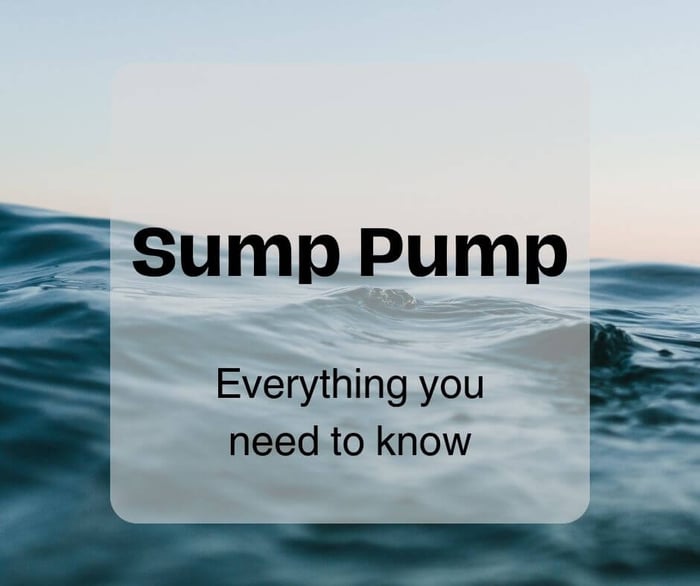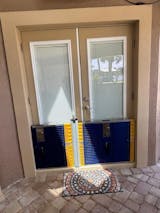Whether you're a homeowner in the sunny Florida or rocky Colorado, you're likely no stranger to the occasional heavy rainstorm and other factors that may cause serious floods. Floods are happening more and more often worldwide, and certain flood risks are inevitable wherever you choose to live today. That's where, along with modern flood barriers, a sump pump becomes your home's unsung hero!
In this guide, we'll walk you through everything you need to know about sump pumps, its maintainance, and some crucial lifehacks that will keep your house flood-free.

Here`s how a sump pump works.
Let's start with the basics. It is a small but mighty device installed in the lowest part of your home, typically in the basement or crawl space.
Its main job is to keep excess water out of your home by pumping it away from the foundation and into a special drainage area.

There are two types of sump pumps:
- Pedestal pumps have the motor mounted above the sump pit, making maintenance easier but are generally louder.
- Submersible pumps are installed inside the sump pit, submerged in water, which makes them quieter but slightly more challenging to maintain.
Does every house need a sump pump?
Whether or not a house needs this device depends on various factors, including the local climate, the home's location, its elevation, and the construction of the foundation.
Here are the factors that you need to concider when choosing whether to get a sump pump for your priperty or not:
- Local Climate: If you live in an area prone to heavy rainfall, storms, or flooding, the pump can be a valuable addition to your home's waterproofing system. Keep in mind that the climate is changing now. Also, a heavy snowfall this winter may make a sump pump essential for your house in spring.
- Home's Location: Homes built in low-lying areas or places with high water tables are more susceptible to groundwater intrusion, and it may be a real salvation for them.
- Foundation Type: Homes with basements or crawl spaces are more likely to require a sump pump because these areas are prone to accumulating water.
- Previous Flooding: If your home has experienced flooding before, installing the device can help mitigate future water damage.
- Building Codes and Regulations: In some areas, local building codes or regulations may require the installation of a sump pump in certain types of properties.

Sump pump maintenance
Maintaining it doesn't have to be complicated. With a few simple steps, you can ensure your pump is ready to protect your home from flooding. Here's a homeowner-friendly guide to the essential pump maintenance:
1. Test the pump:
Start by pouring a bucket of water into the sump pit. Watch to see if the pump kicks on and effectively removes the water. If it doesn't turn on or makes strange noises, it's time to call a repair specialist. Any grinding noises, rattling, or excessive vibrations are red flags that something's not right.
2. Rinse and clean the pump.
After confirming the pump is working, temporarily turn it off and give it a rinse using a hose. If you notice debris stuck to the pump, gently scrub it off with a toothbrush or a putty knife. For larger debris, consider using a wet vac to clear it out from the sump pit.
3. Check the Discharge Line:
Inspect the discharge line to ensure it's not clogged with debris or blocked by plants. Make sure the end of the line is clear and that the water is being discharged far enough away from your home's foundation. If necessary, have a professional install a longer discharge line to prevent water from seeping back into your house.
4. Verify Backup Power:
If it has a backup battery, replace it during maintenance checks, and consider charging it if it's rechargeable. For pumps connected to a generator, ensure the connection is secure and consider testing the generator to confirm it's in working order.
Regular maintenance is key to keeping your home safe from water damage. If you ever need assistance with maintaining your sump pump or any other aspect of your home, don't hesitate to reach out to a professional for help. Your home's safety and your peace of mind are worth it!
Flood Barriers and Doors:
In addition to a sump pump, consider investing in flood barriers and flood gates for added protection. Flood barriers are temporary structures that can be deployed when a storm is imminent to prevent water from entering your home.
$949.00
DAM EASY® FLOOD GATE - DOOR DAM Floods are becoming more common around the world. What was once a 100-year phenomenon is now a seasonal trend that homeowners must deal with. That’s EXACTLY why you need this Dam Easy Flood… Read MoreFlood Barrier Door Dam - Ultimate Flood Gate

They don`t need any special tools or skills, you will not need to call a professional every time you need to floodproof your house and they hardly take any storage space when you are not using them. At the same time, they are able to withstand up to a 4 feet flooding without any leaks, can rotect your house, summer kithen, swimming pool or any other outdoor construction from floodwater keeping it safe and damage free.
Contact us today and get your flood barriers kit today!



















